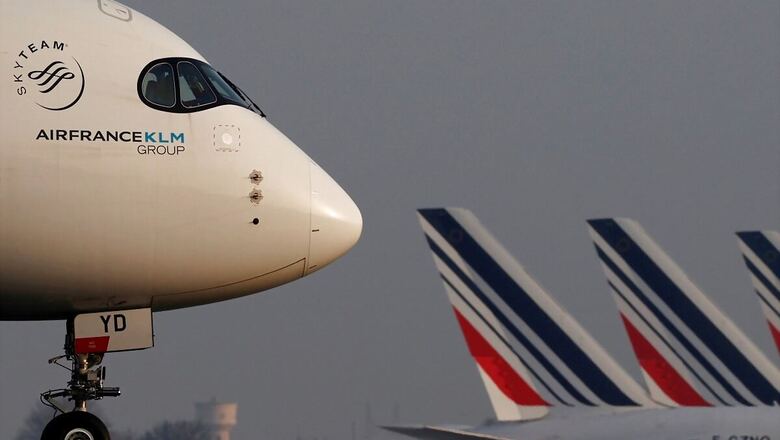
views
Investors famously indicate that airlines are a rotten business. Mostly because of complexity. Hostile unions, low morale, low productivity, planned outages, snowstorms, bomb threats, diversions, strikes, bankruptcies, irate passengers, high attrition, fuel prices, airport security, terminal evacuations, mergers and restructuring. The irony: none of this can bear any consequence. Each day, the flights have to depart — preferably on time — and for the multiple flights arriving and departing out of airports, onsite or offsite, the buck stops with the airline if there is any issue. The issues must be resolved. The launches (flight departures) must not fail. There is no luxury of time.
Leading an airline involves winning the trust of thousands. It involves successfully managing the convergence of technology and human capital. It involves anticipating and addressing new issues — some of which perhaps don’t exist today. For instance, the effects of emerging markets coupled with internet penetration have on booking behaviour; the effects of carbon emissions on consumer behaviour; and the impact of the pandemic on how we feel about travel. This flows through to questions of how pricing models will evolve and what best practices can be incorporated where consumer experience can consistently be a pleasant one.
For airlines the world over, this is a huge challenge. And for India, the challenge is amplified. Mostly because the market has significant distortions that have been glossed over. It doesn’t help that talent has come from other airlines that fly in a sea of sameness. This inevitably leads to an echo-chamber where a flight to conformity is evident. Add to that promoter-led decision-making and a focus on the P&L as opposed to the balance sheet, and the weakness of the industry reveals itself.
Over the last decade, as Indian aviation went from strength to strength, what was conveniently overlooked was the fundamental structural weakness in the industry. Balance sheets were weak, liquidity was low and pricing strategy was a race to the bottom. Yet, no one complained. Because double-digit growth didn’t allow for such questions. It was a given that India would be the third largest aviation market within a 20-year period, if not sooner, and it was a market that one simply could not ignore. But growth is a strange thing; it pays for everything till it stops. And at that point reality comes back to bite.
Over the last decade, India’s airlines grew by leaps and bounds. But in looking to commercialise strategy, they only had one lever. Namely: discounting. This due to a dearth of ideas coupled with defensive decision-making. To be fair, discounting worked wonders, and with capable revenue management strategies, airlines were able to secure minimal bookings that at least covered the cost of flying. Supplement this with ancillary streams such as the sale-and-leaseback income and cargo revenue and things were rosy. That was until airlines, as a resort to shore up cash, started to take it a step further and offering discounts to last-minute bookings. Once that was done, folks just started booking later and later. And the impacts were seen in cash-flow profiles.
Fast-forward to the present and all travel is now effectively emergency travel and unavoidable travel. And in spite of unheard of discounts and offers, the bookings are simply not coming. And the few bookings that are coming are coming in late. Revenue management is all but impossible.
If that is not bad enough, complexity has crept in. And this is akin to cancer for airlines that often glamourise simplicity as a part of the business model. The usual refrain is to focus on one type of aircraft, flying to a homogeneous airport mix and flying them to the end of the range, thereby leveraging the range and capacity dynamics optimally. But the truth is that at this point, given all the additional elements of health security, liquidity, cash-flow and consumer behaviour, this is simply narrative falsification and glosses over the complexity that has emerged. And complexity that is here to stay even with a single-fleet type and a minimal network.
Airlines now are more like complex adaptive systems — defined as one where a perfect understanding of the individual parts does not end itself to a perfect understanding of the whole system’s behaviour. These systems are highly interdisciplinary and understanding them requires insights from the natural and social sciences that are then modeled to understand emergent behaviour. Airline planners effectively have to do the same. And the pandemic has accelerated this requirement to embrace complexity and constantly adapt.
With Covid-19 impacting aviation in the most disproportionate manner, it has left most stunned. Old models do not work and data-driven decisions no longer are sacrosanct. Because these simply cannot capture emotions – emotions of apprehension, anxiety and anguish. Yet alleviating these fears is exactly what is required. Of airlines, of airline planners and even regulators. Covid-19 has led to exponentially complexity in aviation. Tried-and-tested models no longer hold. The future is anything but certain.
Read all the Latest News, Breaking News and Coronavirus News here. Follow us on Facebook, Twitter and Telegram.



















Comments
0 comment